7 potato growing problems that could ruin your crop – plus expert tips on how to avoid them
What growers can do to combat pests, disease, or deficiencies that could potentially ruin a potato harvest
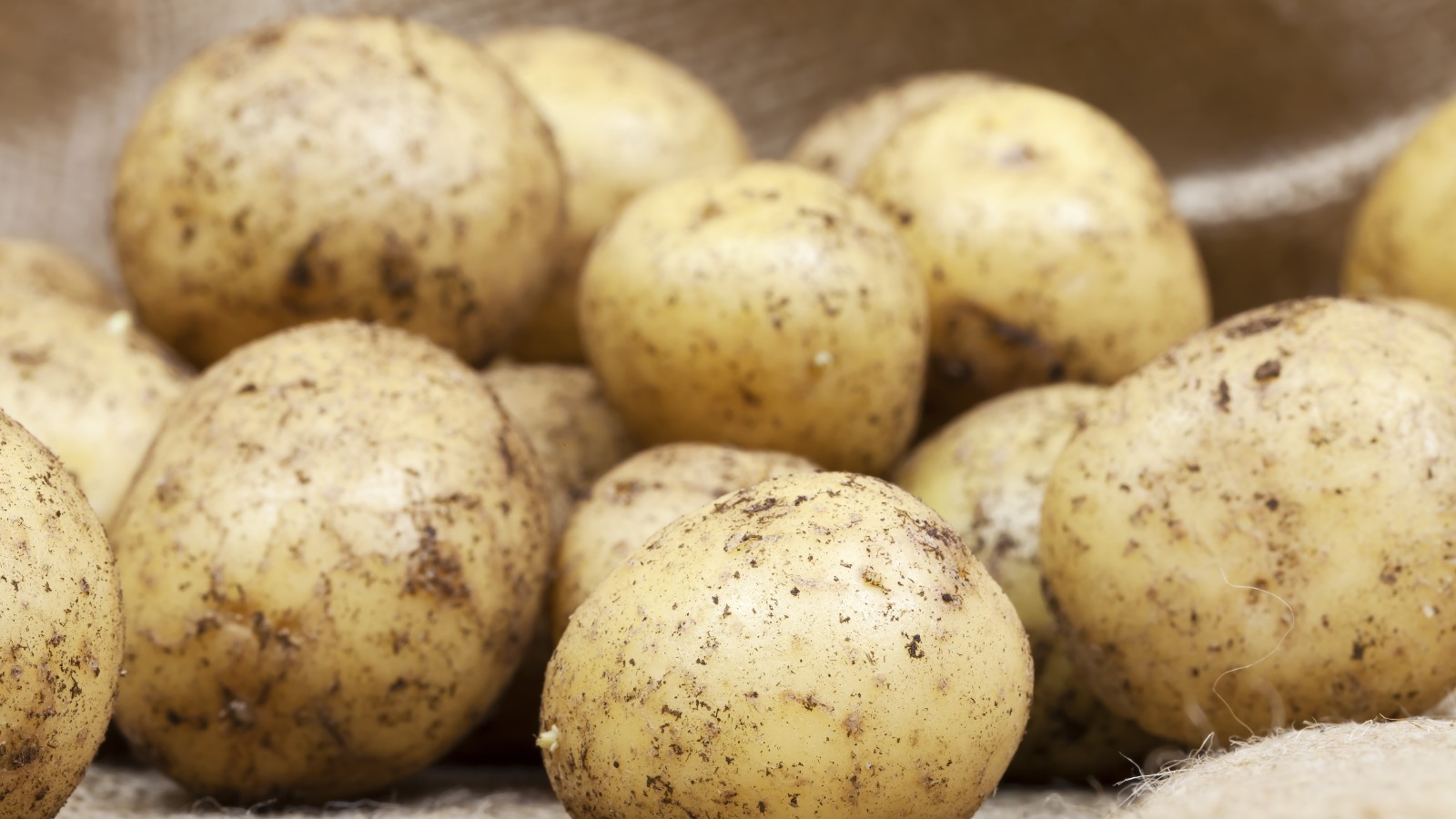

Potatoes are grown at home by gardeners around the globe. It is a crop that tends to take up a lot of space and is in the ground for a long period, so you want to get a good harvest for all your efforts.
It is not always plain-sailing unfortunately, and there are all manner of potential pitfalls for the potato grower. There is always the risk of pests and diseases, with blight being the most prevalent, and the climate can go against you, with late frosts or extreme heat.
There are also some human errors that come into the equation, so it does pay dividends to learn how to grow potatoes to get factors such as planting, watering and fertilizing spot on.

Potatoes must be lifted carefully to avoid damaging the tubers

Drew is a former professional gardener who specialized in growing vegetables for many years. He worked in historic kitchen gardens in the UK and grew a wide range of edibles for chefs. Potatoes were a staple annual crop in the productive gardens. He has also grown vegetables at home – including potatoes – in raised beds and containers.
7 Common Potato Growing Problems
We look at seven of the most frequent potato growing problems that growers can experience and hear from some expert growers about what you can do to avoid falling foul of these troubles. As well as in the ground in dedicated beds, you can grow potatoes in a container and you can also explore how to grow potatoes in bags. Unfortunately, your crop can be affected in any of these scenarios by these issues.
1. Blight
Perhaps one of the main potato growing problems that growers face and one that many will have probably dealt with at some stage or other. I know I have had my potatoes hit by blight before, when growing on my allotment. To further confuse the situation, there is early blight and late blight that can hit potatoes.
Early blight shows as dark rings, brown spots, or lesions that spread through the plant. It can prevent tubers from reaching full size, and potatoes have dark and sunken lesions. The fungus spreads in hot and dry weather where the leaves of potato plants are wet from watering. Any leaves or stems affected need to be removed and you can try to avoid early blight by watering crops from the bottom and avoiding splashing water on the leaves when watering crops.
Late blight attacks the foliage and the tubers of potatoes in the summer and is common during warm, wet, and humid weather. When the weather has two consecutive days over 50F and with 6-10 hours of 90% humidity, that is the prime time for the spores to develop and spread quickly. The symptoms of blight include brownish black spots or blotches appearing on leaves and stems, starting on the tips of the leaves and causing them to collapse and shrivel. The disease, if unchecked, will travel down the plant and infect the tubers, causing a red-brown decay and then rotting.
Design expertise in your inbox – from inspiring decorating ideas and beautiful celebrity homes to practical gardening advice and shopping round-ups.
If you spot signs of blight then it is best to cut down all affected plants and destroy the foliage. Do not add them to your home compost as it can spread the spores around the garden in the soil next year. Leave the tubers in the ground for a few weeks and then dig them up to use, but make sure not to store potatoes that have been from affected plants.
You can buy fungicidal treatments engineered specifically for blight management – both early and late blight – such as copper fungicide available on Amazon, or get potato varieties that are blight-resistant. Good crop rotation is also recommended to prevent the build-up of any diseases in the soil.
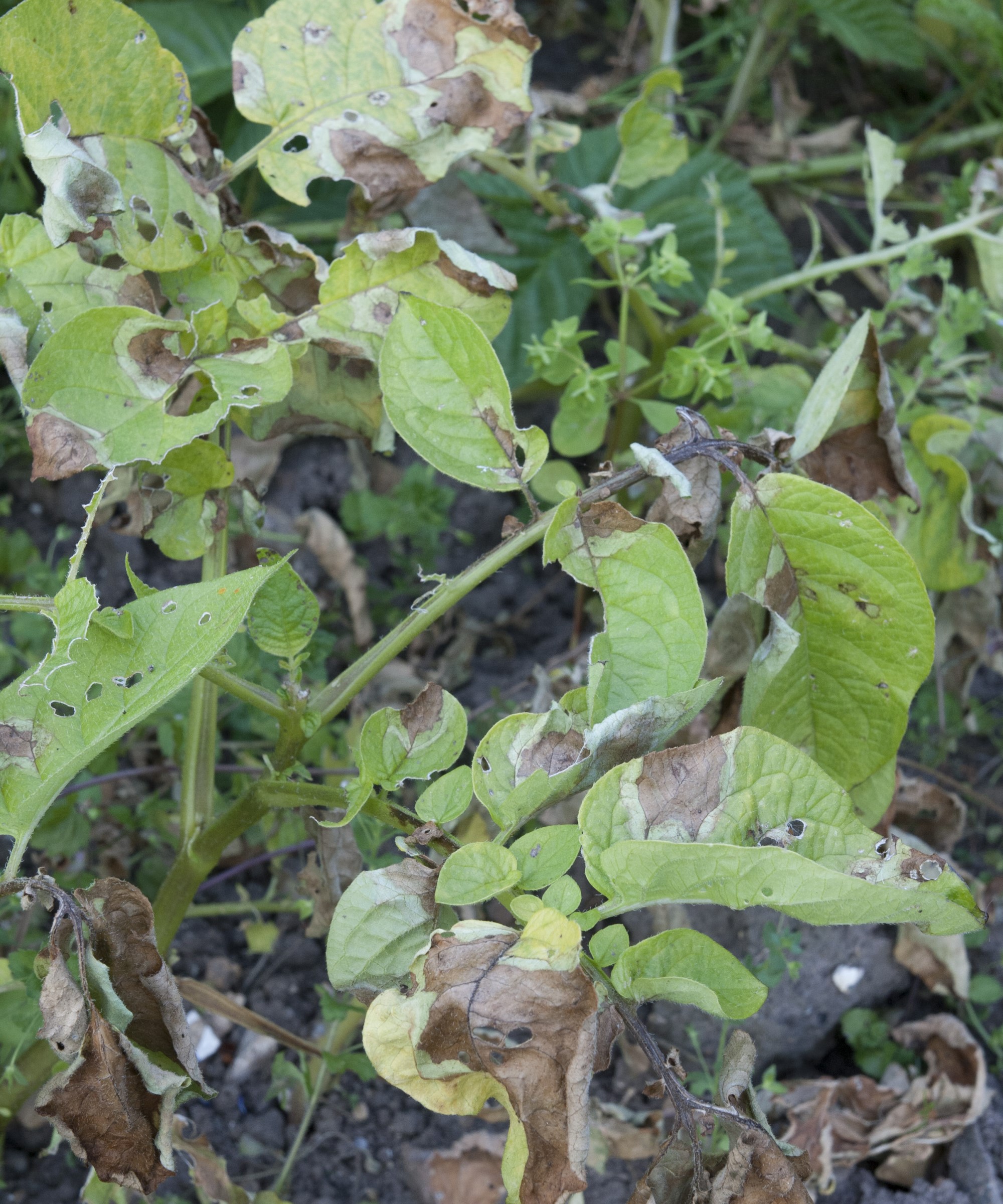
Blotches on leaves are a tell-tale sign of blight
2. Small tubers
Potatoes love fertile soil and a sunny spot. The plants want to capture that sunlight and absorb all the nutrients it needs to grow in size and develop tubers. An absence of some nutrients, or an excessive quantity of any, can cause problems and a smaller harvest. The plant wants a balanced mix of nutrients, from the likes of well-rotted manure, compost, or fertilizers.
Most chemical fertilizers you buy for potatoes are fairly balanced in terms of nitrogen, phosphorus and potassium – usually equal amounts of the first two and around half of the potash. Check the plant fertilizer number on the label for the exact breakdown. However, get that balance wrong in your soil and it can have devastating effects. For example, just applying manure will put far too much nitrogen in the soil, hitting the development of tubers, delaying the setting of skin on the potatoes, and leaving the plant more vulnerable to disease.
Dominique Kline, Farm Manager at The Hope Farm in Fairhope, AL, says: ‘In addition to healthy moisture balance, potatoes require well-balanced fertilization.
‘Nitrogen promotes lush foliage, but in potato farming, we’re seeking root development. An overabundance of nitrogen can cause your plants to put all of their energy into leaf development rather than bulking their tubers.
‘Seek a moderately balanced ratio of nitrogen, potassium, and phosphorous for optimal growth.’
You can get soil testing kits to learn the nutrient ratio of your soil, such as the MySoil test kit at Walmart. If you do want to add lots of manure, then it is best to do it in the fall before planting potatoes in the spring and use a balanced fertilizer during the growing season.
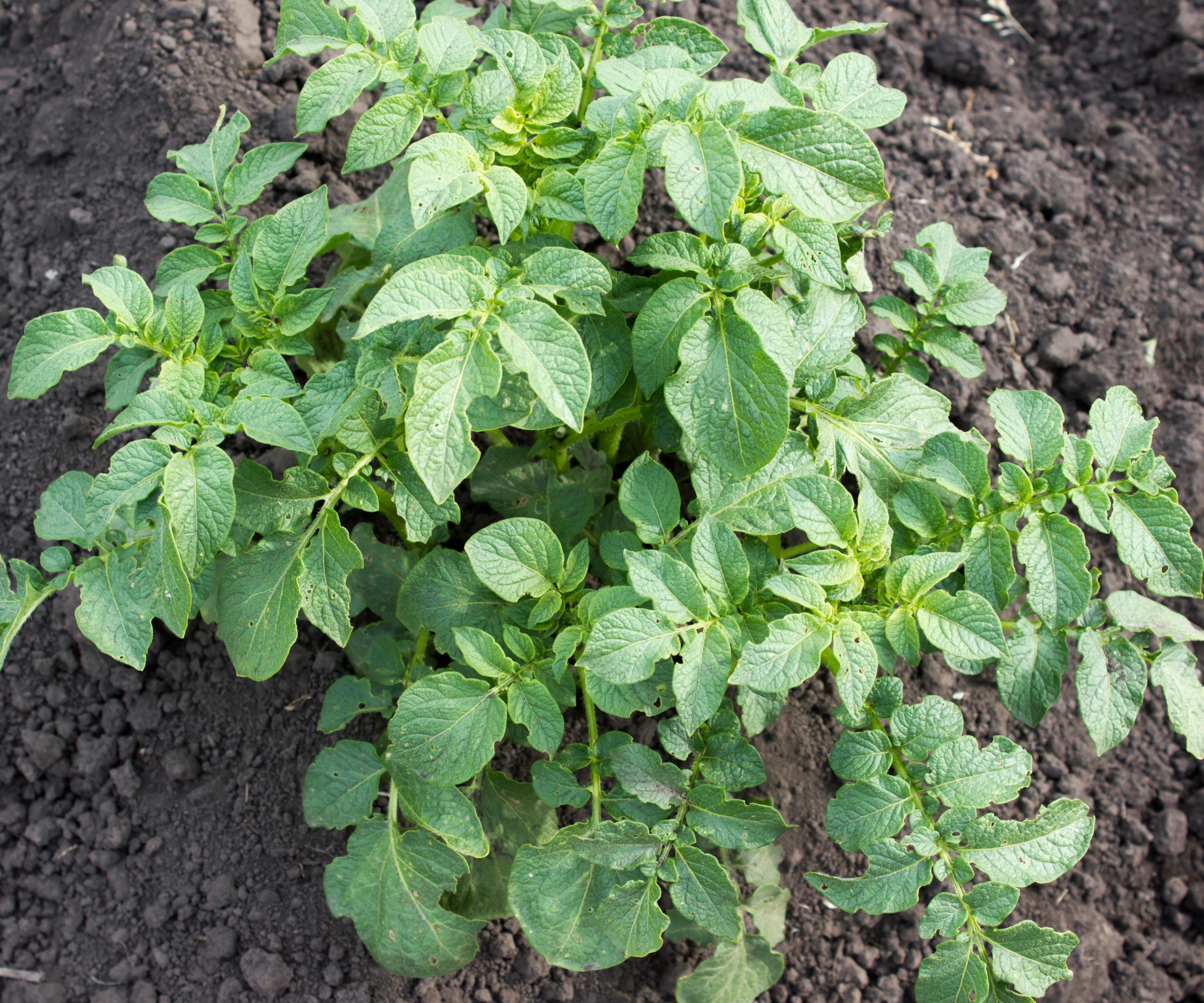
Potatoes require strong root development as well as foliage growth
3. Yellow leaves
Potatoes are a plant that likes moist soil in which to grow, however it is very easy to overwater them and that can lead to major potato growing problems. When any plant is overwatered, the spaces in the soil that normally hold oxygen instead are filled with water. That can suffocate roots and eventually lead to their death. Signs of overwatering include yellow leaves and dieback – and it can be difficult to recover from.
Potatoes need 1-2 inches of water a week, both from rainfall and irrigation. Take care not to over-saturate the ground and use your finger to check the moisture levels around 6 inches deep. If you use irrigation then ensure to take any rainfall into account. Other potential methods to prevent overwatering include planting the tubers in raised beds or digging drainage trenches between the rows.
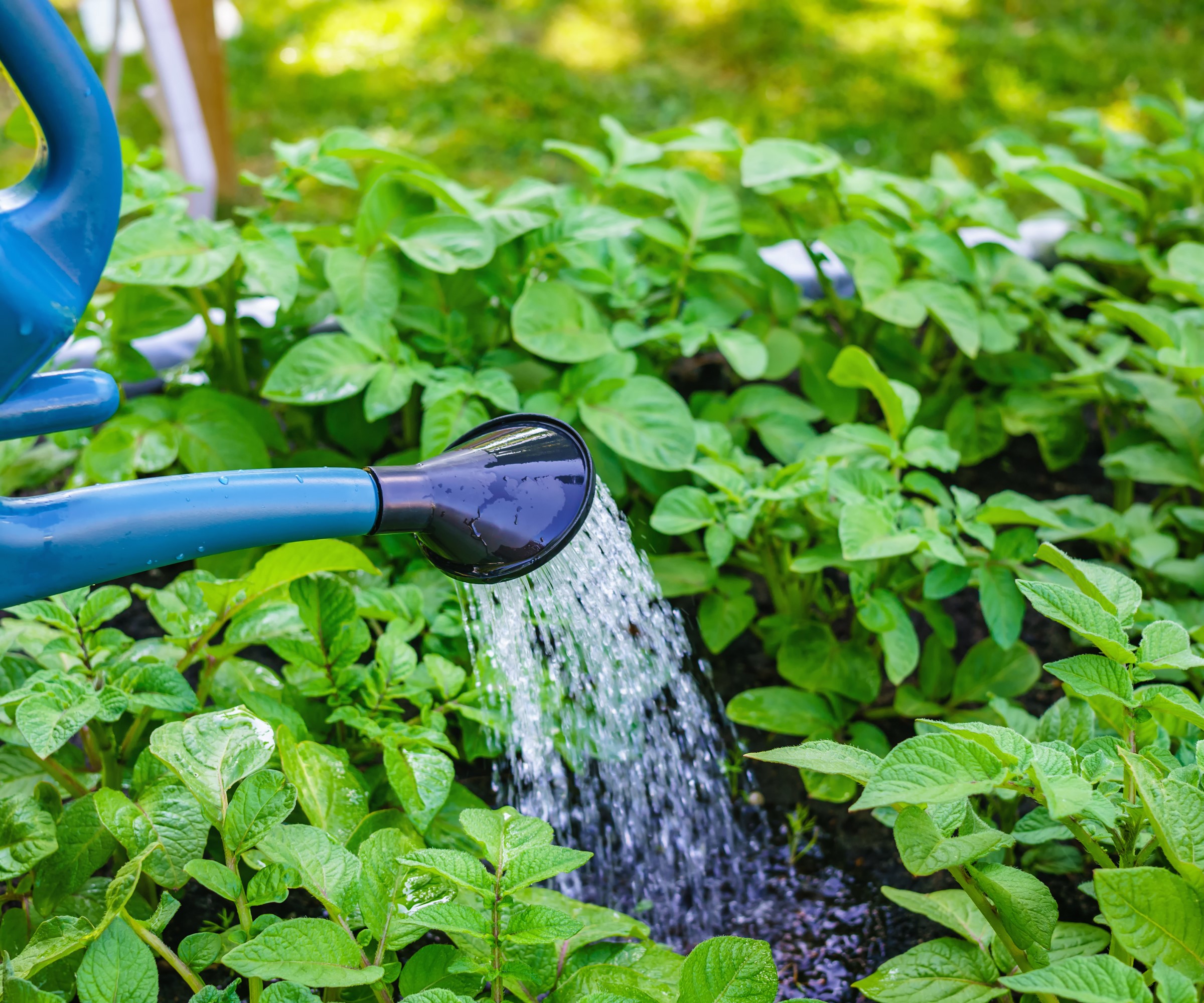
Take care to avoid over-watering and over-wetting leaves
4. Frost damage
Potato plants can be susceptible to damage from frost either as a result of planting the crop out too early, or climate throwing up unexpected late frosts. Any damage can be caused when temperatures drop below 30˚F and young potato plants and shoots are very sensitive to frosts. The signs of frost damage are leaf margins going black or the foliage dying. Avoid planting your potatoes too early, holding off until the soil is consistently above 40˚F before planting your crop.
Melvin Cubian, gardening expert from PlantIn, warns of the dangers frost poses for potato plants and recommends what to do if there are any late frosts predicted in your area. He says: ‘Frost injures the plant as the water molecules freeze, forming sharp ice crystals piercing through cell walls. As a result, fragile leaves (mainly the top shoots) and the young tubers would show water-soaked lesions and wilt.
‘After hearing a frost advisory, waste no time by earthing up the exposed tubers and putting grass straw mulches to insulate them from cold. Small plants planted in rows should be covered with plastic to help conserve heat.’
If you are growing your potatoes in a bucket, container, or bag, then you should move the plants to a more sheltered spot if there is a forecast for late frosts in your area.

Young plants are highly susceptible to frost damage
5. Green potatoes
One of the main tasks throughout the potato growing season is to hill up plants as they grow. When the potato foliage grows around 8 inches above the ground, hilling up involves mounding more soil or organic matter around the plants – until only the tips appear. This is done repeatedly throughout the growing season as it helps to increase the yield.
Hilling up is an important task as it ensures that tubers remain covered and in darkness as they grow. If potatoes break through the soil surface and are subjected to light it causes development of chlorophyll – which can cause problems if consumed. Any green potato that shows signs of glycoalkaloid production should be thrown away.
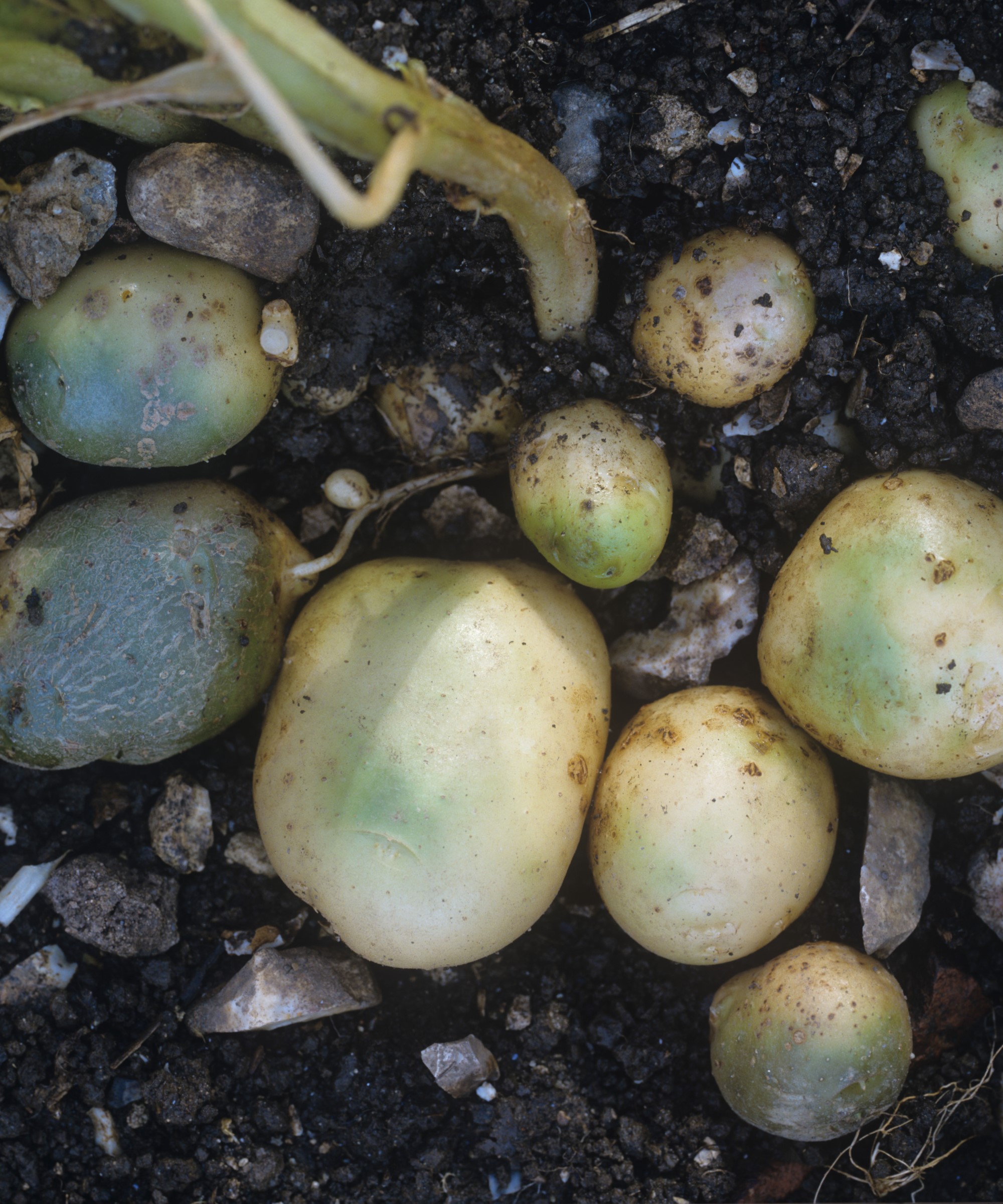
Green potatoes are inedible and should be thrown away
6. Hollow centers
Known as hollow heart disease, although not actually a true disease, it causes a cavity to form in the center of the potato tuber. It is thought rapid changes in the growth rate of a tuber often causes this disformity.
Melvin Cubian, gardening expert from PlantIn, highlights fluctuating soil moisture levels and a change-up in nutrient levels from inconsistent fertilizer applications as factors that can cause hollow heart disease. He says: ‘Ensure that [the crop] is watered well enough weekly to keep the moisture constant. Slow-release fertilizers or organic ones are recommended to not overwhelm the storage organ.’
Growers need to ensure there are no extended periods of overwatering, or underwatering, that can stress the tubers. If there are periods of extreme heat predicted, then consider mulching potatoes to keep them cool to avoid succumbing to hollow heart disease. If you are growing potatoes in a bag, or in containers, then move them to a sheltered spot in periods of such heat.
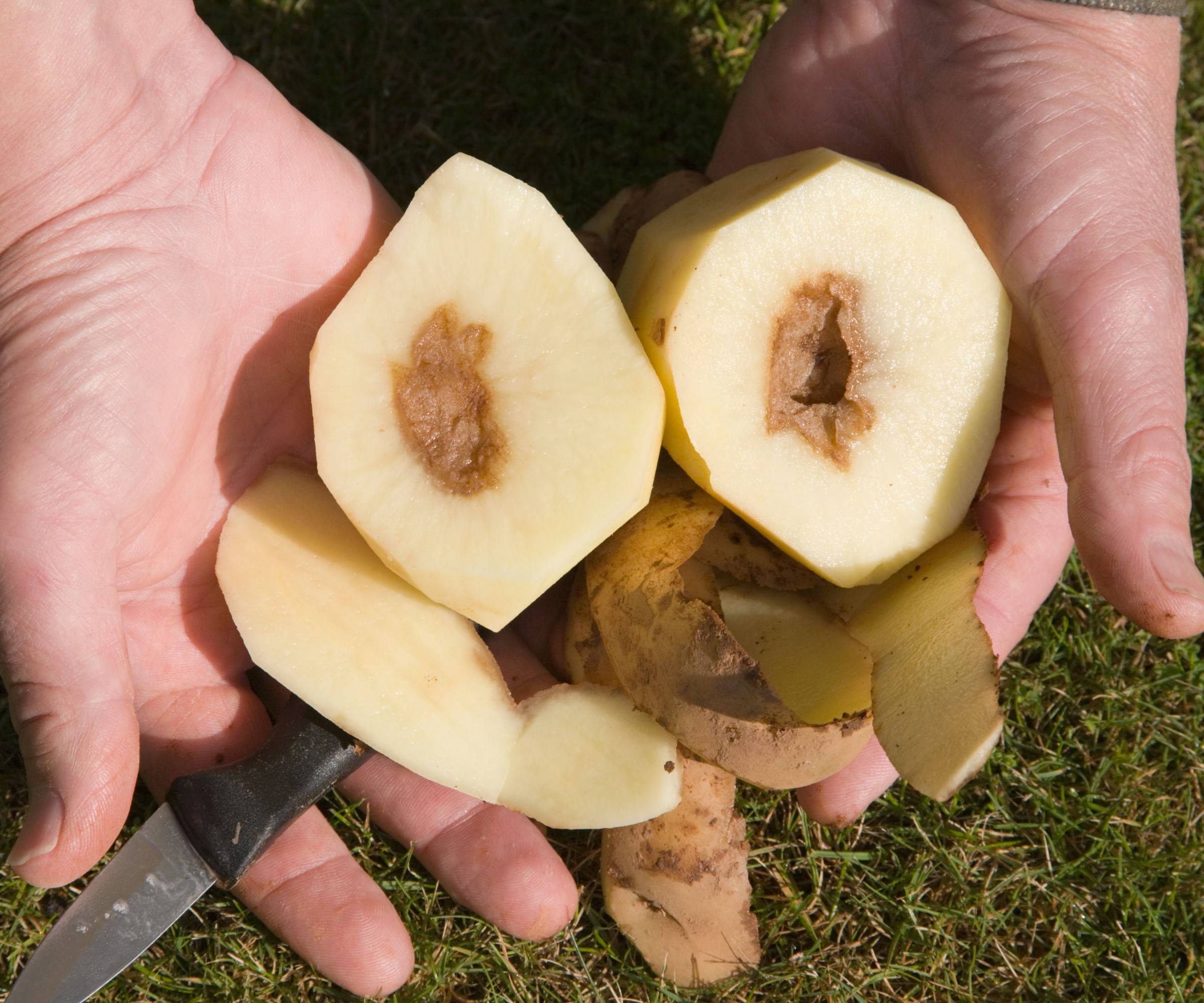
Hollow heart disease leaves cavities in the tuber
7. Pests
Dominique Kline, Farm Manager at The Hope Farm, accepts pests are always ‘a part of life for farmers, especially when choosing a route that avoids pesticides’. Common insects such as the Colorado potato beetle, aphids, potato leafhoppers, and cutworms can be destructive to crops.
There are sprays you can buy to combat many typical potato pests, including some that are categorized as organic like the Colorado Potato Beetle Beater on Amazon. However, Dominique talks about how they use companion planting as the primary pest-control method. Crop rotation, using potato companion plants, encouraging beneficial predators, and planting varieties that are resistant to certain pests are all organic routes to go down to try to combat pests, including the Colorado potato beetle.
‘There are a range of plants that are suitable for intercropping with potatoes - cilantro is a notable one, drawing beneficial predatory insects like ladybugs. Garlic companion planting is also an excellent option as it discourages pests with its fragrance and even potentially lowering the risk of late blight,’ she says.
‘One of the best ways to provide your plants with the optimal environment for growth with minimal pesticide use is by encouraging biodiversity on your property- for example, creating habitats for songbirds that will eat troublesome insects and providing flowering plants for pollinators.
‘Through patience, a healthy crop rotation, improved biodiversity, consistent irrigation, and a solid fertilization schedule, you’ll have a bountiful potato harvest to enjoy for months to come.’

Colorado potato beetle is a problem in most of the US

Drew has worked as a writer since 2008 and was also a professional gardener for many years. As a trained horticulturist, he worked in prestigious historic gardens, including Hanbury Hall and the world-famous Hidcote Manor Garden. He also spent time as a specialist kitchen gardener at Soho Farmhouse and Netherby Hall, where he grew vegetables, fruit, herbs, and cut flowers for restaurants. Drew has written for numerous print and online publications and is an allotment holder and garden blogger. He is shortlisted for the Digital Gardening Writer of the Year at the 2025 Garden Media Guild Awards.